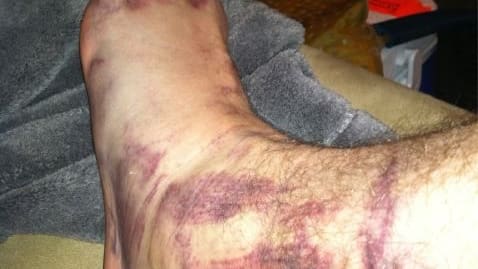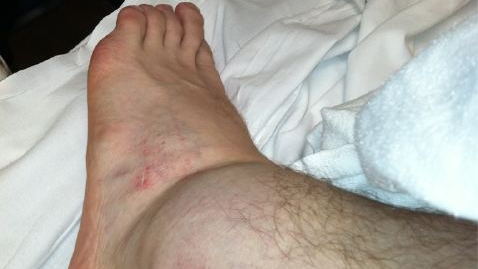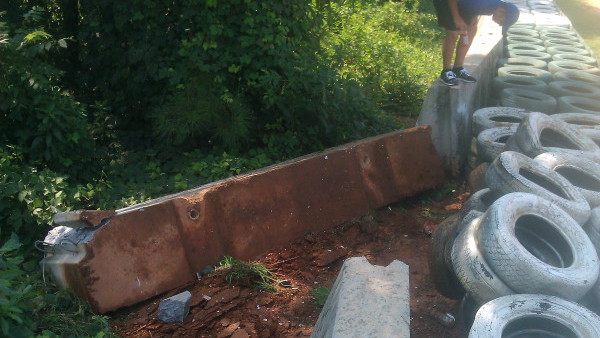
Brad Keselowski's wrecked car, as shared on Twitter by Jimmie Johnson
[Warning: strong images ahead]
The days of a death every month, or nearly every race, as during racing's storied but deadly heyday of the 1950s and 1960s, are well behind us, thanks in part to F1 legends like Jackie Stewart and Niki Lauda who pushed for safety initiatives that have changed motorsports into a much safer activity--spurred by Lauda's famous, horrible accident that permanently scarred him with severe burns and many other incidents. But if you thought it had been reduced to near-complete safety through SAFER barriers, fire suits, HANS devices, and crash cells, you're wrong.
Accidents like Robert Kubica's 165-mph off at the Canadian GP in 2007 (seen on video below) and Mark Webber's spectacular backflip at Valencia (also on video below) can give the impression that modern track design and in-car safety gear are up to the task of near-complete protection.
Kubica's own devastating rally crash at the Ronde di Andora earlier this year, from which he's still recovering, puts the lie to that idea, however. So does Felipe Massa's injury from an errant spring at the Hungaroring in 2009, and Henry Surtees' death in a very similar accident the week before at Brands Hatch. These latter two incidents have made the push for yet more safety in open-cockpit racing, particularly F1, all the more urgent and innovative.

Brad Keselowski's technicolor foot after Road Atlanta testing crash.

Travis Pastrana's x-rays and injuries after his crash at X Games 17
There are many more injuries and deaths each season, at both amateur and pro levels, despite all that modern science has done to improve safety of the car, the track, and the driver's gear. Racing may not be the Russian roulette game it once was, but it's not a safe and sterile game stripped of its danger or need for courage, either.
That said, we still hop behind the wheel of every race car we can, and enjoy the hell out of it. As we like to say, be careful, be prepared, but most of all, be fast.





